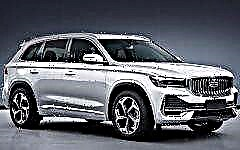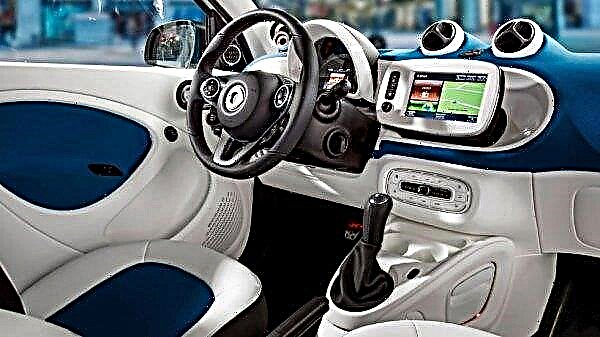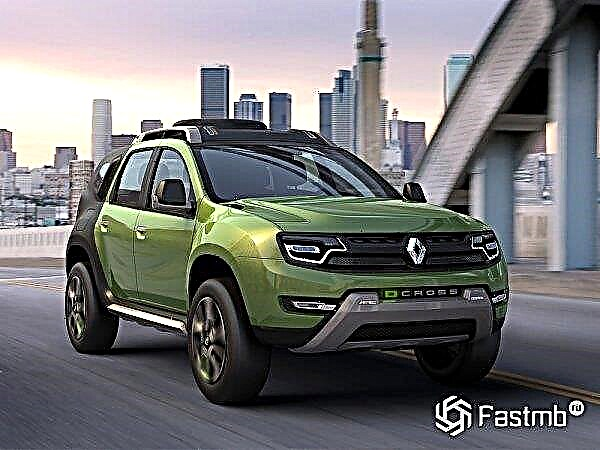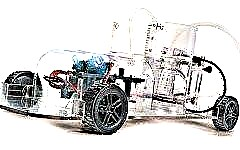

The content of the article:
- A bit of history
- The hallmark of hydrogen engines
- The main pros and cons of hydrogen motors
- The most popular cars with a hydrogen internal combustion engine
"Hydrogen is the fuel of the future" - it is with this message that hydrogen ICEs are being introduced into the transport and aviation industries.
It is no coincidence that hydrogen occupies a leading position among all other sources of alternative energy - it is as environmentally friendly as possible, has a renewable resource, and also has the highest efficiency in comparison with classical engines operating on gasoline and diesel.
However, in addition to undeniable advantages, the hydrogen engine also has a number of disadvantages, which do not yet allow making it massive and completely supplant the "harmful" gasoline and diesel engines.
A bit of history

Humanity began to think about the need to preserve the environment quite recently, but scientists began to think about replacing a conventional internal combustion engine much earlier.
So, from the hand of the scientist François Isaac de Rivaz, a native of France, the first hydrogen engine was manufactured in 1806. In 1841, Britain received the first patent agreement for the manufacture of a hydrogen engine, and in 1852 German scientists were able to create an internal combustion engine. operating on an air-hydrogen mixture.
However, plans for the introduction of hydrogen engines were thwarted by gasoline engines, which became widespread after 1870.
They remembered hydrogen as an alternative fuel again only in 1941 in besieged Leningrad. Then the Soviet technician B. Shelishch used an air-hydrogen "cocktail" to launch barrage balloons.
Then hydrogen was forgotten again, until the worldwide fuel crisis knocked on the door in the 1970s. In the late 70s, the BMW carmaker released its first car operating on hydrogen, and then other companies followed its example, including the American General Motors and Ford, the Japanese Honda and others.
Nevertheless, as soon as the crisis subsided, interest in hydrogen as a source of energy faded again. And now, decades later, mankind again remembered its existence, which was facilitated not only by the activation of environmentalists, but also by the rise in fuel prices.
The hallmark of hydrogen engines

Structurally, a hydrogen engine is not much different from a standard internal combustion engine. It also contains pistons, a combustion chamber and a connecting rod-crank mechanism. So what's the difference?
The fact is that hydrogen engines use a different method of supplying the fuel mixture and its subsequent combustion. In addition, the combustion of hydrogen takes much less time than in the case of petroleum-based fuels. The differences are insignificant, and at first glance it may seem that it is not difficult to convert a conventional ICE to a hydrogen one, but this is not so.
A number of problems with using a hydrogen engine:
- Hydrogen is difficult to obtain. It is no secret that it is contained in water and is rightfully considered the most widespread chemical element in the world, although it is practically not represented in its pure form. This means that the car must be equipped with a special closed-type installation - an electrolyser, which is responsible for splitting water and allowing hydrogen to be produced. However, in practice, such an installation is difficult to manufacture, which greatly affects its final cost.
- Due to the high compression temperature, hydrogen easily reacts with various metal elements of the power plant and even with engine oil.
- Even a small leak of hydrogen on contact with a heated manifold will cause a fire. That is why today, when creating hydrogen motors, only rotary power plants are used, since they reduce the risk of fire due to the greater distance between the intake and exhaust manifolds.
Nevertheless, most of the problems have been solved so far, not only on rotary installations, but also in engines using piston mechanisms, which allows hydrogen to remain the most promising replacement for gasoline / diesel.
The main pros and cons of hydrogen motors

The main advantages that hydrogen engines have:
- high level of environmental friendliness, since the product of its combustion is water vapor. When hydrogen burns out, engine oil also burns out, however, the amount of toxic exhaust is several times less than when gasoline or "heavy" fuel is burned;
- high efficiency, which is several times higher than that in classical power plants operating on diesel or gasoline fuel;
- relative structural simplicity, as well as the absence of expensive and unreliable fuel supply systems, which are also dangerous;
- noiselessness.
Despite a number of significant advantages, hydrogen motors have a sufficient number of disadvantages:
- high price and complexity of obtaining pure hydrogen;
- undeveloped infrastructure of filling stations capable of refueling with hydrogen;
- lack of international standards for the transportation and use of hydrogen fuel;
- high cost of fuel components and maintenance of hydrogen engines;
- difficulties associated with the storage of hydrogen fuel. Scientists still have not come to a common denominator regarding the material that must be used in the manufacture of tanks for storing combustible hydrogen;
- an increase in the total mass of the car due to the presence of a hydrogen engine, which is noticeably heavier than the now widespread gasoline and diesel engines.
In addition, hydrogen cylinders must be regularly inspected and certified, which can only be done by qualified and licensed technicians.
The most popular cars with a hydrogen internal combustion engine

In the photo: Riversimple Rasa
Despite the fact that scientists continue to puzzle over the current problems associated with the use of hydrogen motors, the number of hydrogen-fueled cars continues to grow. The most famous hydrogen-powered cars are:
- Toyota Mirai FCV - the car first debuted in 2013, but went on sale only in 2015. The cylinders available in it provided a "range" of about 500 km.
- BMW 750hL, a concept version of which was shown back in 2000. The vehicle is equipped with a special hydrogen tank, the reserve of which is sufficient to cover a distance of 300 km.
- Honda Clarity is another car that uses hydrogen instead of classic fuel. The main advantages of the model are its spectacular appearance and an impressive, by the standards of hydrogen cars, a power reserve of 589 km.
- The Riversimple Rasa is a small hydrogen car originally from the UK. Its main feature was its low weight (just over 500 kg) and an impressive power reserve - about 500 km.
In addition, manufacturers continue to present hydrogen concept cars, including the Audi H-tron Quattro, the hydrogen Mercedes GLC, the Nikola One truck from Nikola Motor, the H2 Speed supercar from the Pininfarina design house and many others.
Conclusion
Despite a number of disadvantages, hydrogen can become the most promising source of clean energy for the next 30-40 years. We just have to find an effective method for producing hydrogen and develop an infrastructure for its delivery to the end consumer, and then humanity will forever forget not only about the fuel, but also about the environmental crisis.











